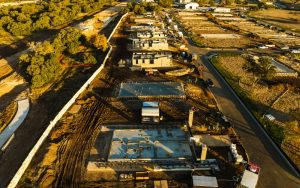Andrew Webb, Principal at WD Architects
Rather than give quick generalisations or ‘design tips’ as such, I would like to firstly lay the groundwork of understanding of the issues – It is virtually impossible to design anything if you don’t understand what the parameters are. I can get to ‘design tips’ in later posts or if asked specific questions. Unless I get feedback, I’ll just ramble on with my thoughts – hopefully they’re helpful.
The best houses are designed to suit their particular sites.
I will expand on what I mean by ‘best’ and what I mean by suiting the ‘site’ – otherwise that statement is useless.
What makes best:
- affordable
- comfortable
- safe
- built to last
- easy maintenance
- healthy
- uplifting
- adaptable
- low impact
What makes ‘best’ for you is worth thinking about. Just remember that the house should outlive you, so don’t build garbage.
What distinguishes the design for one site from another:
- Climate (regional weather patterns)
- Micro-climate (wind patterns, shading, dampness/humidity, temperature – the effects of vegetation, other structures, and topography)
- Soil properties (silt, sand, gravel, clay, rock…also water table, swampiness, dryness, landslip, etc.)
- Topography aka. slope – affects structure, views, micro-climate, access, buildability, and design options (such as split level)
- Noise – road, other people, industry, birds, the noise you expect to create inside/privacy, rain noise, the ocean, etc. Some noises you want, some you don’t – I once designed a house so that it would be noisy inside…the owner had tinnitus which only irritated him when things were quiet.
- Views
- Privacy or lack thereof
- Access – car, bike, foot, horse, boat
- Vegetation
- Water – ocean, lake, creek, underground, dam, seasonal, flooding, bore, rain.
- Service locations – power, sewerage, water, internet, phone
- Dimensions and how that affects orientation
- Council requirements – setbacks, site coverage, height, etc.
- Covenants – typically copied and pasted from one developer to the next without any real understanding on their part why they make these requirements. When they require stupid things: challenge them; you may find that the developer agrees with you (no recycled timber is a common one).
The site is not necessarily the whole block of land – on acreage the best design for one spot may be different for a spot a couple of hundred meters away, as any of the above could vary (except climate).
There is a lot of groundwork to lay. My point here, I suppose, is to look at what you have…or want…or both…and begin a design from that – don’t overlay a design from Barcelona onto a block of land in Kingaroy (not to mention that Australian safety regulations will ruin the Spanish design straight away).
Develop the design from what you have to work with and make it the best it can be.






